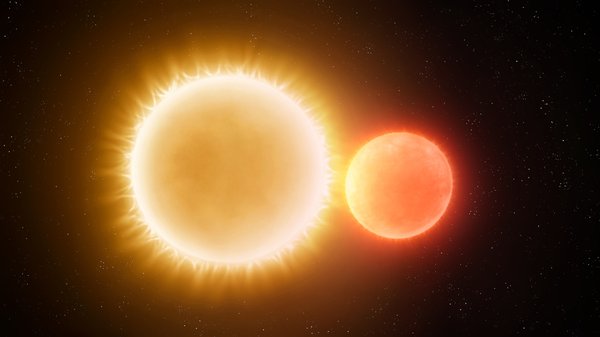Scientists discover a planet similar to Tatooine in Star Wars
2 min read

On hot summer days, many people look angrily at the sun. but, There are planets with not only one sun, but two suns. So-called “ring systems” are those in which planets orbit two stars – reminiscent of the fictional planet Tatooine, from the Star Wars franchise.
This year, British scientists discovered a new planet with these characteristics. The discovery has been published in the scientific journal natural astronomy. This circular system may be called BEBOP-1 or TOI-1338. One of its planets, on which it was possible to understand the influence of two suns, was named BEBOP-1c.
In 2020, astronomers discovered a possible planet in this system thanks to images obtained by NASA’s TESS telescope. Its name was TOI-1338b. At that time, the researchers realized that the photographed object revolved around two stars, but they could not calculate its mass, so there was no certainty that it was a planet.
This year, scientists went to the Atacama Desert, in Chile, and were able to calculate the mass of another planet in that system, BEBOP-1c, mentioned at the beginning of this article.
What does BEBOP-1c look like?

In addition to having two suns to call home, BEBOP-1c is gigantic compared to Earth. Our planet is 65 times the size of our planet and five times smaller than Jupiter, the giant of our solar system.
It is a gaseous planet. It orbits its two stars at a distance of 79% of an astronomical unit (AU). One AU equals the average distance between the Earth and the Sun. Therefore, the length of the year in BEBOP-1c is approximately 215 days.
Help a high school student discover the TOI-1338 system
Wolf Cocker, a high school student in the United States, helped NASA researchers discover the system, which at that time was considered a planet.
“I was looking in the data for anything that the volunteers referred to as an eclipsing binary, a system where two stars orbit each other and, from our perspective, overtake each other with each orbit,” Cocker said. “About three days into the training period, I saw a signal from a system called TOI 1338. At first I thought it was a stellar eclipse, but the timing was wrong,” the student said in a statement released by NASA at the time.
This isn’t the first time astronomers have found planets orbiting two stars. Currently, about 12 star systems are known to have this property.
Ring planets, those that orbit both stars of a central binary star system, challenge our understanding of planet formation. With only 12 binary systems known to host ring planets, identifying more of these planets, along with their physical properties, may help characterize some of the processes the physical forces governing planet formation.

“Entrepreneur. Music enthusiast. Lifelong communicator. General coffee aficionado. Internet scholar.”

:strip_icc()/s04.video.glbimg.com/x720/11792055.jpg)

:strip_icc()/s03.video.glbimg.com/x720/11786998.jpg)